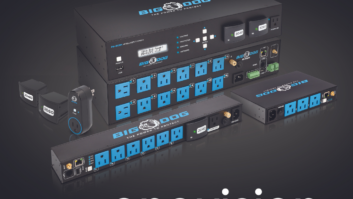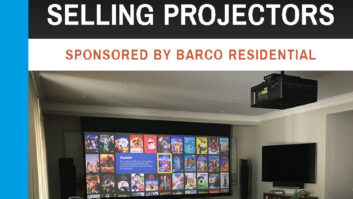It’s no news flash that we live in a world where the technology solutions that we design for our customers are in danger of disintermediation. Wait! Before you run to the den for your dictionary, I’ll save you the trouble. Disintermediation just means the likelihood we (the integrator) are cut out of the loop because something becomes easy enough to do it yourself (DIY) or tastes change (installed any basic 5.1 systems lately?). It’s not a bad thing; technology marches on, and so do we. What is bad, however, is pretending that the emperor has clothes and that things will stay the same. Things never stay the same. Change is the only constant in our industry.
So what’s a poor boy to do? The answer is to sell more big jobs and recurring monthly revenue (RMR) services because these two segments seem to be least prone to disintermediation. You may remember a few blogs back when I mentioned a customer segment called “Pays For Service.” Turns out that each of our Pays For Service customers spend north of $30k per year with us. To illustrate the point, our controller, Lonnie, pulled a snazzy report and sent out this summary for 2014:

Image: ThinkStock
Fig. 1: Lonnie’s Report
For our CEDIA survey I needed to compile the number of completed jobs. I thought I would share the results with you as I found it interesting information. The info below consists of completed jobs (billed 100 percent in QuickBooks) for 2014. These numbers do not include anything we did for less than $265, as I made the assumption that those were service calls.
Job Amount
Jobs Completed (Total 730)Less than $1,000264 $1,000–$2,000
168
$2,000–$3,00094
$3,000–$4,000
36$4,000–$5,000
35$5,000–$10,00068Greater than $10,00065
I went back to look at all jobs with 100 percent completion for 2014. I thought this figure was eye opening; we did 994 jobs that were less than $3,500. We only did 1,181 jobs total of all dollar ranges. Those 994 jobs totaled $752,000 in revenue. That seems like an awful lot of work, payroll and resources for the money considering it took another 187 jobs to make the other almost $2M. This means our average ticket price for 2014 was $2,286.
I love Lonnie. Of course, she’s right. I love the point she makes about the number of hands touching a small job is the same as a big job (an oversimplification, but good reactive point). It’s great when industry outsiders weigh in with an objective lens. So it’s simple, we should just sell more big jobs, right? Easy! Of course, we’re just like you, fishing from a pond with a limited number of trophy fish. We get a chance to bid on most of those big jobs and win our fair share. In other words, our big job strategy is to be networked enough to get an invitation to the dance. That only took 14 years in Richmond, so breaking into a new market and doing the same thing should be a snap! I wish that were true, but what makes our businesses challenging to scale benefits those of us who’ve invested the time and energy to gain market share in our respective regions.
That said, we still have a huge gaping hole in our business given the fickle nature of the big job. Even when you think you have the big job, you still might not get it. Some strategy!
While we’re going to continue big game hunting, we’re also turning our attention toward the complete shambles we call our RMR strategy. We sell RMR by accident. Because of this, we have hundreds of accounts, not thousands. We want thousands. Don’t you? I’ll put it another way. Each of our RMR accounts averages around $49 monthly. If you have 1,000 accounts, that’s $49,000 coming in the door each month as passive income. Do you have 1,000 systems in the wild? A lot of you do. How many of them have a passive revenue stream associated with them?
Our new RMR strategy is to incentivize our sales people to sell at least one new RMR account per week. Bar the door. one per week! Clifford, you taskmaster, you! How could you?
I have 49,000 reasons.
Notice I haven’t mentioned exactly which RMR products we’re selling? I know security systems are not appealing to a lot of the CEDIA world. Whether we like it or not, these “security systems” (think Alarm.com, etc.) are now potentially competitive bidders offering lighting control, locks, thermostats, and many of the bells and whistles our tried and true processor-based systems offer (for less that $1,000 in a lot of installations). If you don’t like security systems as an RMR stream, then have you considered managed services platforms like ihiji? Imagine being more proactive with your clients and not having to roll trucks as much (and getting paid for the privilege).
By engaging in our new strategy, we hope to make worrying about cash a thing of the past. How many of you struggle sometimes to make payroll or use customer deposits to finance your operations while wishing you didn’t have to?
The appeal of RMR is also its biggest weakness. It’s not shiny and builds slowly. Consider, however, how great is it that no single customer makes or breaks your month. Slow and steady, $49 at a time.
A friend in the alarm industry told me that to truly grasp the RMR mindset, you have to be willing to forgo selling the $50,000 system and instead look at it as a $499 per month income stream. Consider other industries selling everything as a service (think software as a service — SaaS). What else can we sell as a service?
I humbly submit my theory of selling more big jobs and RMR.
Stay frosty and see you in the field.







